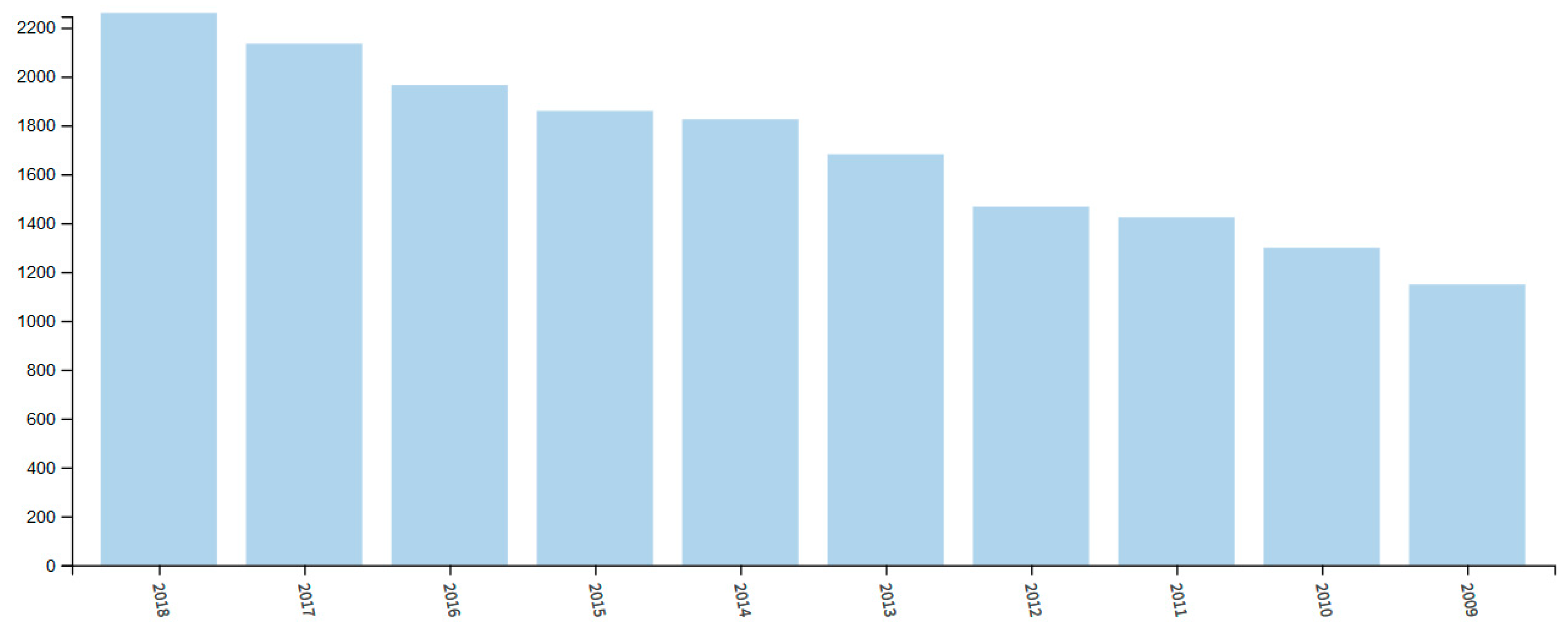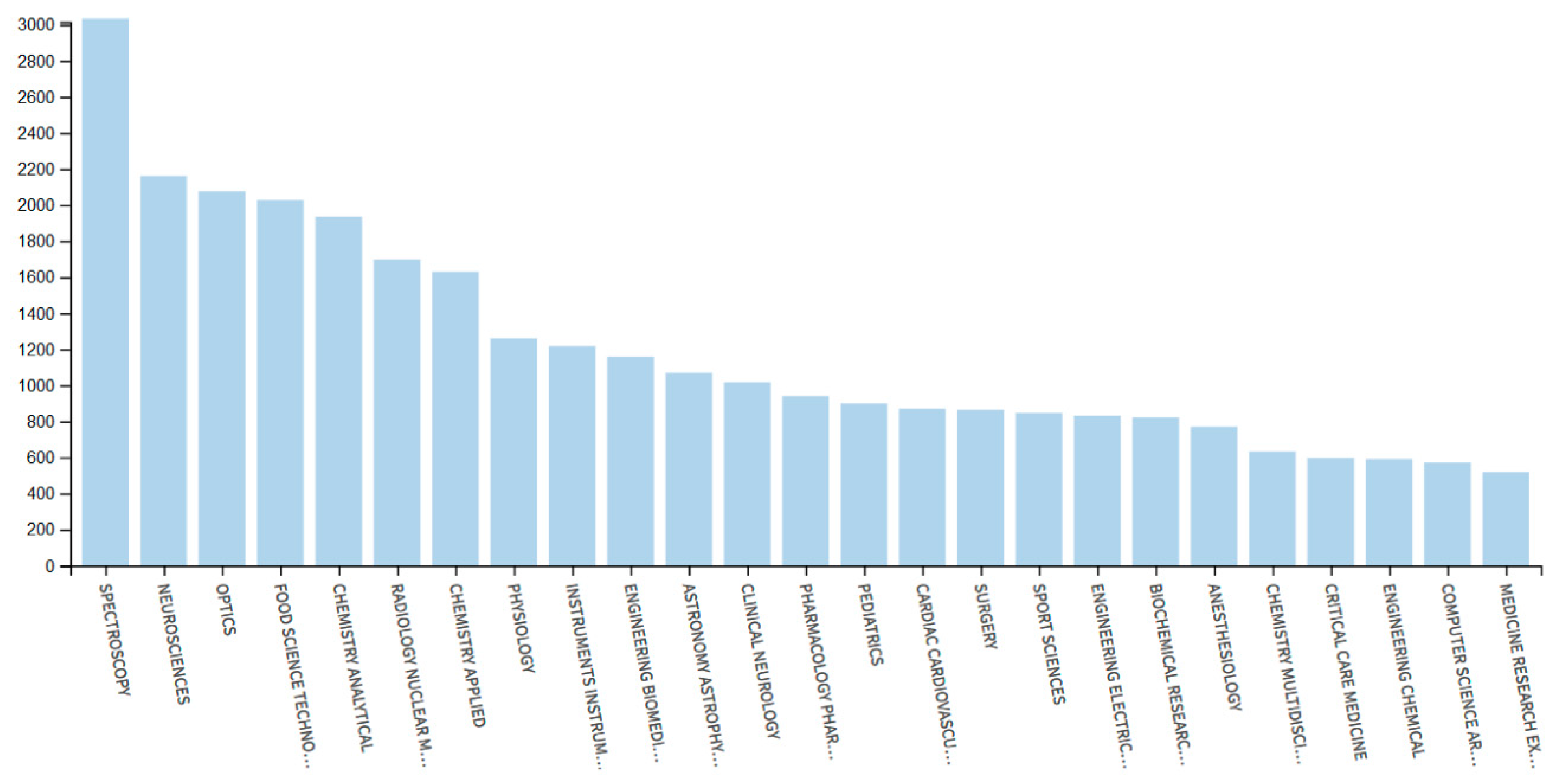Advances in Near-Infrared Spectroscopy and Related Computational Methods
Funding
Conflicts of Interest
References
- Siesler, H.W.; Ozaki, Y.; Kawata, S.; Heise, H.M. (Eds.) Near Infrared Spectroscopy: Principles, Instruments, Applications; Wiley-VCH: Weinheim, Germany, 2002. [Google Scholar]
- Ozaki, Y.; Huck, C.W.; Beć, K.B. Near infrared spectroscopy and its applications. In Molecular and Laser Spectroscopy; Gupta, V.P., Ed.; Elsevier: Amsterdam, The Netherlands, 2017. [Google Scholar]
- Czarnecki, M.A.; Morisawa, Y.; Futami, Y.; Ozaki, Y. Advances in molecular structure and interaction studies using near-infrared spectroscopy. Chem. Rev. 2015, 115, 9707–9744. [Google Scholar] [CrossRef] [PubMed]
- Kirchler, C.G.; Pezzei, C.K.; Beć, K.B.; Mayr, S.; Ishigaki, M.; Ozaki, Y.; Huck, C.W. Critical evaluation of spectral information of benchtop vs. portable near-infrared spectrometers: Quantum chemistry and two-dimensional correlation spectroscopy for a better understanding of PLS regression models of the rosmarinic acid content in Rosmarini folium. Analyst 2017, 142, 455–464. [Google Scholar] [PubMed]
- Beć, K.B.; Huck, C.W. Breakthrough potential in near-infrared spectroscopy: Spectra simulation. A review of recent developments. Front. Chem. 2019, 7, 48. [Google Scholar] [CrossRef] [PubMed]
- Web of Science Database Query. Search for “Near Infrared Spectroscopy”. Available online: https://wcs.webofknowledge.com/RA/analyze.do?product=WOS&SID=D4zaDudmNOG6Ax865O1&field=PY_PublicationYear_PublicationYear_en&yearSort=true (accessed on 5 November 2019).
- Grabska, J.; Beć, K.B.; Kirchler, C.G.; Ozaki, Y.; Huck, C.W. Distinct difference in sensitivity of NIR vs. IR bands of melamine to inter-molecular interactions with impact on analytical spectroscopy explained by anharmonic quantum mechanical study. Molecules 2019, 24, 1402. [Google Scholar] [CrossRef]
- Beć, K.B.; Grabska, J.; Huck, C.W.; Czarnecki, M.A. Spectra–structure correlations in isotopomers of ethanol (CX3CX2OX.; X = H, D): Combined near-infrared and anharmonic computational study. Molecules 2019, 24, 2189. [Google Scholar] [CrossRef]
- Beganović, A.; Moll, V.; Huck, C.W. Comparison of multivariate regression models based on water—And carbohydrate-related spectral regions in the near-infrared for aqueous solutions of glucose. Molecules 2019, 24, 3696. [Google Scholar] [CrossRef]
- Sun, L.; Hsiung, C.; Smith, V. Investigation of direct model transferability using miniature near-infrared spectrometers. Molecules 2019, 24, 1997. [Google Scholar] [CrossRef]
- Wiedemair, V.; Langore, D.; Garsleitner, R.; Dillinger, K.; Huck, C.W. Investigations into the performance of a novel pocket-sized near-infrared spectrometer for cheese analysis. Molecules 2019, 24, 428. [Google Scholar] [CrossRef]
- Neves, M.D.G.; Poppi, R.J.; Siesler, H.W. Rapid determination of nutritional parameters of pasta/sauce blends by handheld near-infrared spectroscopy. Molecules 2019, 24, 2029. [Google Scholar] [CrossRef]
- Zhao, Y.; Zhao, Z.; Shan, P.; Peng, S.; Yu, J.; Gao, S. Calibration transfer based on affine invariance for NIR without transfer standards. Molecules 2019, 24, 1802. [Google Scholar] [CrossRef]
- Chen, Y.; Wang, Z. Wavelength selection for NIR spectroscopy based on the binary dragonfly algorithm. Molecules 2019, 24, 421. [Google Scholar] [CrossRef] [PubMed]
- Pei, Y.-F.; Zuo, Z.-T.; Zhang, Q.-Z.; Wang, Y.-Z. Data fusion of Fourier transform mid-infrared (MIR) and near-infrared (NIR) spectroscopies to identify geographical origin of wild Paris polyphylla var. yunnanensis. Molecules 2019, 24, 2559. [Google Scholar] [CrossRef] [PubMed]
- Zhao, Y.; Yu, J.; Shan, P.; Zhao, Z.; Jiang, X.; Gao, S. PLS subspace-based calibration transfer for near-infrared spectroscopy quantitative analysis. Molecules 2019, 24, 1289. [Google Scholar] [CrossRef] [PubMed]
- Delueg, S.; Kirchler, C.G.; Meischl, F.; Ozaki, Y.; Popp, M.A.; Bonn, G.K.; Huck, C.W. At-line monitoring of the extraction process of Rosmarini folium via wet chemical assays, UHPLC analysis, and newly developed near-infrared spectroscopic analysis methods. Molecules 2019, 24, 2480. [Google Scholar] [CrossRef] [PubMed]
- Frosch, T.; Wyrwich, E.; Yan, D.; Domes, C.; Domes, R.; Popp, J.; Frosch, T. Counterfeit and substandard test of the antimalarial tablet Riamet® by means of Raman hyperspectral multicomponent analysis. Molecules 2019, 24, 3229. [Google Scholar] [CrossRef] [PubMed]
- Marinelli, B.; Pluchinotta, F.; Cozzolino, V.; Barlafante, G.; Strozzi, M.C.; Marinelli, E.; Franchini, S.; Gazzolo, D. Osteopathic manipulation treatment improves cerebro–splanchnic oximetry in late preterm infants. Molecules 2019, 24, 3221. [Google Scholar] [CrossRef]
- Chaber, R.; Arthur, C.J.; Łach, K.; Raciborska, A.; Michalak, E.; Bilska, K.; Drabko, K.; Depciuch, J.; Kaznowska, E.; Cebulski, J. Predicting ewing sarcoma treatment outcome using infrared spectroscopy and machine learning. Molecules 2019, 24, 1075. [Google Scholar] [CrossRef]
- Zhang, X.; Yang, Y.; Wang, Y.; Fan, Q. Detection of the BRAF V600E mutation in colorectal cancer by NIR spectroscopy in conjunction with counter propagation artificial neural network. Molecules 2019, 24, 2238. [Google Scholar] [CrossRef]
- Fang, M.; Xia, S.; Bi, J.; Wigstrom, T.P.; Valenzano, L.; Wang, J.; Tanasova, M.; Luck, R.L.; Liu, H. Detecting Zn(II) ions in live cells with near-infrared fluorescent probes. Molecules 2019, 24, 1592. [Google Scholar] [CrossRef]
- Han, Y.; Jian, L.; Yao, Y.; Wang, X.; Han, L.; Liu, X. Insight into rapid DNA-specific identification of animal origin based on FTIR analysis: A case study. Molecules 2018, 23, 2842. [Google Scholar] [CrossRef]
- Marotz, J.; Kulcke, A.; Siemers, F.; Cruz, D.; Aljowder, A.; Promny, D.; Daeschlein, G.; Wild, T. Extended parameter estimation from Hyperspectral imaging data for bedside diagnostic in medicine. Molecules 2019, 24, 4164. [Google Scholar] [CrossRef] [PubMed]
- Fernández-Novales, J.; Tardáguila, J.; Gutiérrez, S.; Paz Diago, M. On-The-Go VIS + SW − NIR spectroscopy as a reliable monitoring tool for grape composition within the vineyard. Molecules 2019, 24, 2795. [Google Scholar] [CrossRef]
- He, X.; Feng, X.; Sun, D.; Liu, F.; Bao, Y.; He, Y. Rapid and nondestructive measurement of rice seed vitality of different years using near-infrared hyperspectral imaging. Molecules 2019, 24, 2227. [Google Scholar] [CrossRef] [PubMed]
- Xu, L.; Sun, W.; Ma, Y.; Chao, Z. Discrimination of Trichosanthis fructus from different geographical origins using near infrared spectroscopy coupled with chemometric techniques. Molecules 2019, 24, 1550. [Google Scholar] [CrossRef] [PubMed]
- Toledo-Martín, E.M.; del Carmen García-García, M.; Font, R.; Moreno-Rojas, J.M.; Salinas-Navarro, M.; Gómez, P.; Del Río-Celestino, M. Quantification of total phenolic and carotenoid content in blackberries (Rubus fructicosus L.) using near infrared spectroscopy (NIRS) and multivariate analysis. Molecules 2018, 23, 3191. [Google Scholar] [CrossRef]
- Zhang, J.; Dai, L.; Cheng, F. Classification of frozen corn seeds using hyperspectral VIS/NIR reflectance imaging. Molecules 2019, 24, 149. [Google Scholar] [CrossRef]
- Feng, L.; Zhu, S.; Zhang, C.; Bao, Y.; Feng, X.; He, Y. Identification of maize kernel vigor under different accelerated aging times using hyperspectral imaging. Molecules 2018, 23, 3078. [Google Scholar] [CrossRef]
- Feng, L.; Zhu, S.; Zhang, C.; Bao, Y.; Gao, P.; He, Y. Variety identification of raisins using near-infrared hyperspectral imaging. Molecules 2018, 23, 2907. [Google Scholar] [CrossRef]
- Wu, N.; Zhang, C.; Bai, X.; Du, X.; He, Y. Discrimination of chrysanthemum varieties using hyperspectral imaging combined with a deep convolutional neural network. Molecules 2018, 23, 2831. [Google Scholar] [CrossRef]
- Camps, C.; Camps, Z.-N. Optimized prediction of reducing sugars and dry matter of potato frying by FT-NIR spectroscopy on peeled tubers. Molecules 2019, 24, 967. [Google Scholar] [CrossRef]
- Jiang, H.; Chen, Q. Determination of adulteration content in extra virgin olive oil using FT-NIR spectroscopy combined with the BOSS–PLS algorithm. Molecules 2019, 24, 2134. [Google Scholar] [CrossRef] [PubMed]
- Muncan, J.; Tsenkova, R. Aquaphotomics—From innovative knowledge to integrative platform in science and technology. Molecules 2019, 24, 2742. [Google Scholar] [CrossRef] [PubMed]
- Tan, J.Y.; Ker, P.J.; Lau, K.Y.; Hannan, M.A.; Hoon Tang, S.G. Applications of photonics in agriculture sector: A review. Molecules 2019, 24, 2025. [Google Scholar] [CrossRef] [PubMed]


© 2019 by the authors. Licensee MDPI, Basel, Switzerland. This article is an open access article distributed under the terms and conditions of the Creative Commons Attribution (CC BY) license (http://creativecommons.org/licenses/by/4.0/).
Share and Cite
Beć, K.B.; Huck, C.W. Advances in Near-Infrared Spectroscopy and Related Computational Methods. Molecules 2019, 24, 4370. https://doi.org/10.3390/molecules24234370
Beć KB, Huck CW. Advances in Near-Infrared Spectroscopy and Related Computational Methods. Molecules. 2019; 24(23):4370. https://doi.org/10.3390/molecules24234370
Chicago/Turabian StyleBeć, Krzysztof B., and Christian W. Huck. 2019. "Advances in Near-Infrared Spectroscopy and Related Computational Methods" Molecules 24, no. 23: 4370. https://doi.org/10.3390/molecules24234370
APA StyleBeć, K. B., & Huck, C. W. (2019). Advances in Near-Infrared Spectroscopy and Related Computational Methods. Molecules, 24(23), 4370. https://doi.org/10.3390/molecules24234370





